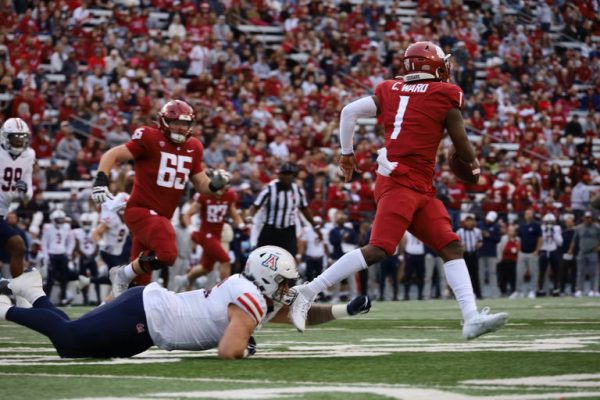SEC is the leader of college football
April 18, 2017
With seven NCAA football titles in the past 10 years, some believe the only relevant conference is the Southeastern Conference (SEC).
That notion is not far-fetched when the SEC receives the amount of media time, money and talent it consistently attracts. I’m convinced having all three is the key to long-term, commercialized stability.
It all starts with the talent. You can’t be the best if you don’t win, right?
Sure, the SEC had an off year in 2016, but the fact that it is considered an off year should tell you something. Seven consecutive national championships from 2006 to 2012 is more than enough proof that teams in the SEC know how to win. They have talent.
In 2012, former South Carolina Head Coach Steve Spurrier jokingly admitted how many talented players the conference attracts.
“It’s easier to win the national championship than [to win a conference title in] the SEC,” Spurrier said in an ESPN interview with Joe Schad.
I think there’s certainly some truth in that humor.
Conferences that aren’t producing championships must deal with a vicious cycle. When a team has talented players, the team wins; when the team wins, recruiting numbers go up; when recruiting numbers go up, it makes it much easier for the team to sign highly rated players.
The University of Alabama year-in and year-out shows this cycle as they consistently find themselves in the midst of a national title run and are among the top schools in signing the best recruiting class in the country.
I’m sure if you asked high school football players what their dream is, most of their answers would be to play in the NFL. Football isn’t like baseball, where if a player is good enough, they can get drafted and skip college altogether; they must enroll for at least one year.
Well, which conference usually leads with the highest number of draft picks per season? None other than – you guessed it – the SEC. The incentive to sign with an SEC team is too staggeringly high for athletes to turn down.
As long as SEC universities can identify talent, which they consistently do, all they need to do is recruit. It is hard to imagine Alabama Head Coach Nick Saban having any difficulty luring athletes to play for his dominant program. Incentivizing athletes to play somewhere outside of the Southern conference is where the real difficulty lies.
The SEC doesn’t just have talent though, it has its own network deal. While it is true the ACC, Pac-12 and Big-10 also have network deals, the SEC Network is by far the most successful.
The media time the SEC sees has transformed into dollar signs for its members.
“Anything can happen when television starts telling you what to do,” Spurrier said.
In the first year, the SEC Network made close to $530 million in revenue from 2014-2015. Comparatively, the Pac-12 Network had about $90 million less than the SEC. That’s big considering a generous portion of that money is split among universities.
Jon Wilner of the San Jose Mercury News predicts that by the end of the year, WSU may be earning $23 million – but universities in the SEC could be earning $35 million.
Money is what makes the world go round, and success essentially boils down to whoever has the most dough. So yeah, when SEC teams are making over $10 million more than WSU or UW annually, it hurts the program.
If money is power, as many believe, then the SEC is currently the most powerful conference in college football. While network revenue amounts bring in a lot of money, that’s just a slice of the cake.
Universities also have a chance to make money by going to bowl games or competing in the College Football Playoff. As mentioned before, that’s only possible with talent – a category the SEC doesn’t lack in.
Until other conferences can find a way to bridge the gap with the SEC, it will likely continue to dominate college football.
Jacob Moore is a junior sport management major from Tacoma. He can be contacted at 335-2290 or by [email protected].




















